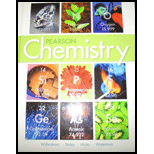
Chemistry 2012 Student Edition (hard Cover) Grade 11
12th Edition
ISBN: 9780132525763
Author: Prentice Hall
Publisher: Prentice Hall
expand_more
expand_more
format_list_bulleted
Question
Chapter 4, Problem 48A
Interpretation Introduction
Interpretation : The significance of
Concept Introduction : The smallest component of an element that maintains its identity during a
Expert Solution & Answer
Answer to Problem 48A
The atomic number of each atom represents the proton count of that atom.
Explanation of Solution
The atomic number of an element is the total number of protons in its atom's nucleus.An element is identified by its atomic number.
The atomic number of each atom represents the proton count of that atom.
Protons are positively charged subatomic particles which are present inside the nucleus.
Chapter 4 Solutions
Chemistry 2012 Student Edition (hard Cover) Grade 11
Ch. 4.1 - Prob. 1LCCh. 4.1 - Prob. 2LCCh. 4.1 - Prob. 3LCCh. 4.1 - Prob. 4LCCh. 4.1 - Prob. 5LCCh. 4.1 - Prob. 6LCCh. 4.1 - Prob. 7LCCh. 4.1 - Prob. 8LCCh. 4.2 - Prob. 9LCCh. 4.2 - Prob. 10LC
Ch. 4.2 - Prob. 11LCCh. 4.2 - Prob. 12LCCh. 4.2 - Prob. 13LCCh. 4.2 - Prob. 14LCCh. 4.2 - Prob. 15LCCh. 4.3 - Prob. 16SPCh. 4.3 - Prob. 17SPCh. 4.3 - Prob. 18SPCh. 4.3 - Prob. 19SPCh. 4.3 - Prob. 20SPCh. 4.3 - Prob. 21SPCh. 4.3 - Prob. 22SPCh. 4.3 - Prob. 23SPCh. 4.3 - Prob. 24SPCh. 4.3 - Prob. 25SPCh. 4.3 - Prob. 26LCCh. 4.3 - Prob. 27LCCh. 4.3 - Prob. 28LCCh. 4.3 - Prob. 29LCCh. 4.3 - Prob. 30LCCh. 4.3 - Prob. 31LCCh. 4.3 - Prob. 32LCCh. 4.3 - Prob. 33LCCh. 4.3 - Prob. 34LCCh. 4 - Prob. 35ACh. 4 - Prob. 36ACh. 4 - Prob. 37ACh. 4 - Prob. 38ACh. 4 - Prob. 39ACh. 4 - Prob. 40ACh. 4 - Prob. 41ACh. 4 - Prob. 42ACh. 4 - Prob. 43ACh. 4 - Prob. 44ACh. 4 - Prob. 45ACh. 4 - Prob. 46ACh. 4 - Prob. 47ACh. 4 - Prob. 48ACh. 4 - Prob. 49ACh. 4 - Prob. 50ACh. 4 - Prob. 51ACh. 4 - Prob. 52ACh. 4 - Prob. 53ACh. 4 - Prob. 54ACh. 4 - Prob. 55ACh. 4 - Prob. 56ACh. 4 - Prob. 57ACh. 4 - Prob. 58ACh. 4 - Prob. 59ACh. 4 - Prob. 60ACh. 4 - Prob. 61ACh. 4 - Prob. 62ACh. 4 - Prob. 63ACh. 4 - Prob. 64ACh. 4 - Prob. 65ACh. 4 - Prob. 66ACh. 4 - Prob. 67ACh. 4 - Prob. 68ACh. 4 - Prob. 69ACh. 4 - Prob. 70ACh. 4 - Prob. 71ACh. 4 - Prob. 76ACh. 4 - Prob. 77ACh. 4 - Prob. 78ACh. 4 - Prob. 79ACh. 4 - Prob. 84ACh. 4 - Prob. 85ACh. 4 - Prob. 86ACh. 4 - Prob. 87ACh. 4 - Prob. 88ACh. 4 - Prob. 1STPCh. 4 - Prob. 2STPCh. 4 - Prob. 3STPCh. 4 - Prob. 4STPCh. 4 - Prob. 5STPCh. 4 - Prob. 6STPCh. 4 - Prob. 7STPCh. 4 - Prob. 8STPCh. 4 - Prob. 9STP
Knowledge Booster
Similar questions
- For the following alkyne, complete the reaction sequentially (that is draw the intermediate that we can’t stop at) and then name (complete name) all 3 molecules.arrow_forwardGiven the reaction sequence below, answer the following. A. Provide the structure for A. B. Provide the structure for B (pay attention to stereochemistry). C. Provide the structure for C. D. What are the stereochemical designations for I and II (R/S)?arrow_forwardWhich of the following is the most stable carbon radical?arrow_forward
- Put the following carbon radicals in order of increasing stability.arrow_forwardDraw the major organic product for each of the following reactions (pay attention to stereochemistry).arrow_forwardThere are 2 reactions (that you know of) to achieve the following transformation: One reaction is favored over the other because it avoids a competing reaction. A. Draw the favored reaction scheme (not the mechanism), be sure to include all necessary reagents. B. Draw the reaction scheme that is not favored and include all the possible products.arrow_forward
- Both carbocations and carbon-radicals have trigonal planar geometry. True or Falsearrow_forwardTeflon (polytetrafluoroethene) is prepared via the radial polymerization of tetrafluoroethene. What other reaction conditions (reagent, etc.) are needed to accomplish this? A. NBS, Light B. Heat, Cl2 C. Peroxide, Heat D. H2SO4, H2O, Heatarrow_forwardWhich of the following compounds can be reacted with ethene to prepare 1,1- dichlorocyclopropane? A. CCl4 B. CCl2 C. CHCl3 D. CH2Cl2arrow_forward
arrow_back_ios
SEE MORE QUESTIONS
arrow_forward_ios
Recommended textbooks for you
 ChemistryChemistryISBN:9781305957404Author:Steven S. Zumdahl, Susan A. Zumdahl, Donald J. DeCostePublisher:Cengage Learning
ChemistryChemistryISBN:9781305957404Author:Steven S. Zumdahl, Susan A. Zumdahl, Donald J. DeCostePublisher:Cengage Learning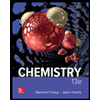 ChemistryChemistryISBN:9781259911156Author:Raymond Chang Dr., Jason Overby ProfessorPublisher:McGraw-Hill Education
ChemistryChemistryISBN:9781259911156Author:Raymond Chang Dr., Jason Overby ProfessorPublisher:McGraw-Hill Education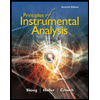 Principles of Instrumental AnalysisChemistryISBN:9781305577213Author:Douglas A. Skoog, F. James Holler, Stanley R. CrouchPublisher:Cengage Learning
Principles of Instrumental AnalysisChemistryISBN:9781305577213Author:Douglas A. Skoog, F. James Holler, Stanley R. CrouchPublisher:Cengage Learning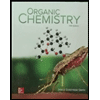 Organic ChemistryChemistryISBN:9780078021558Author:Janice Gorzynski Smith Dr.Publisher:McGraw-Hill Education
Organic ChemistryChemistryISBN:9780078021558Author:Janice Gorzynski Smith Dr.Publisher:McGraw-Hill Education Chemistry: Principles and ReactionsChemistryISBN:9781305079373Author:William L. Masterton, Cecile N. HurleyPublisher:Cengage Learning
Chemistry: Principles and ReactionsChemistryISBN:9781305079373Author:William L. Masterton, Cecile N. HurleyPublisher:Cengage Learning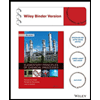 Elementary Principles of Chemical Processes, Bind...ChemistryISBN:9781118431221Author:Richard M. Felder, Ronald W. Rousseau, Lisa G. BullardPublisher:WILEY
Elementary Principles of Chemical Processes, Bind...ChemistryISBN:9781118431221Author:Richard M. Felder, Ronald W. Rousseau, Lisa G. BullardPublisher:WILEY

Chemistry
Chemistry
ISBN:9781305957404
Author:Steven S. Zumdahl, Susan A. Zumdahl, Donald J. DeCoste
Publisher:Cengage Learning

Chemistry
Chemistry
ISBN:9781259911156
Author:Raymond Chang Dr., Jason Overby Professor
Publisher:McGraw-Hill Education

Principles of Instrumental Analysis
Chemistry
ISBN:9781305577213
Author:Douglas A. Skoog, F. James Holler, Stanley R. Crouch
Publisher:Cengage Learning

Organic Chemistry
Chemistry
ISBN:9780078021558
Author:Janice Gorzynski Smith Dr.
Publisher:McGraw-Hill Education

Chemistry: Principles and Reactions
Chemistry
ISBN:9781305079373
Author:William L. Masterton, Cecile N. Hurley
Publisher:Cengage Learning

Elementary Principles of Chemical Processes, Bind...
Chemistry
ISBN:9781118431221
Author:Richard M. Felder, Ronald W. Rousseau, Lisa G. Bullard
Publisher:WILEY